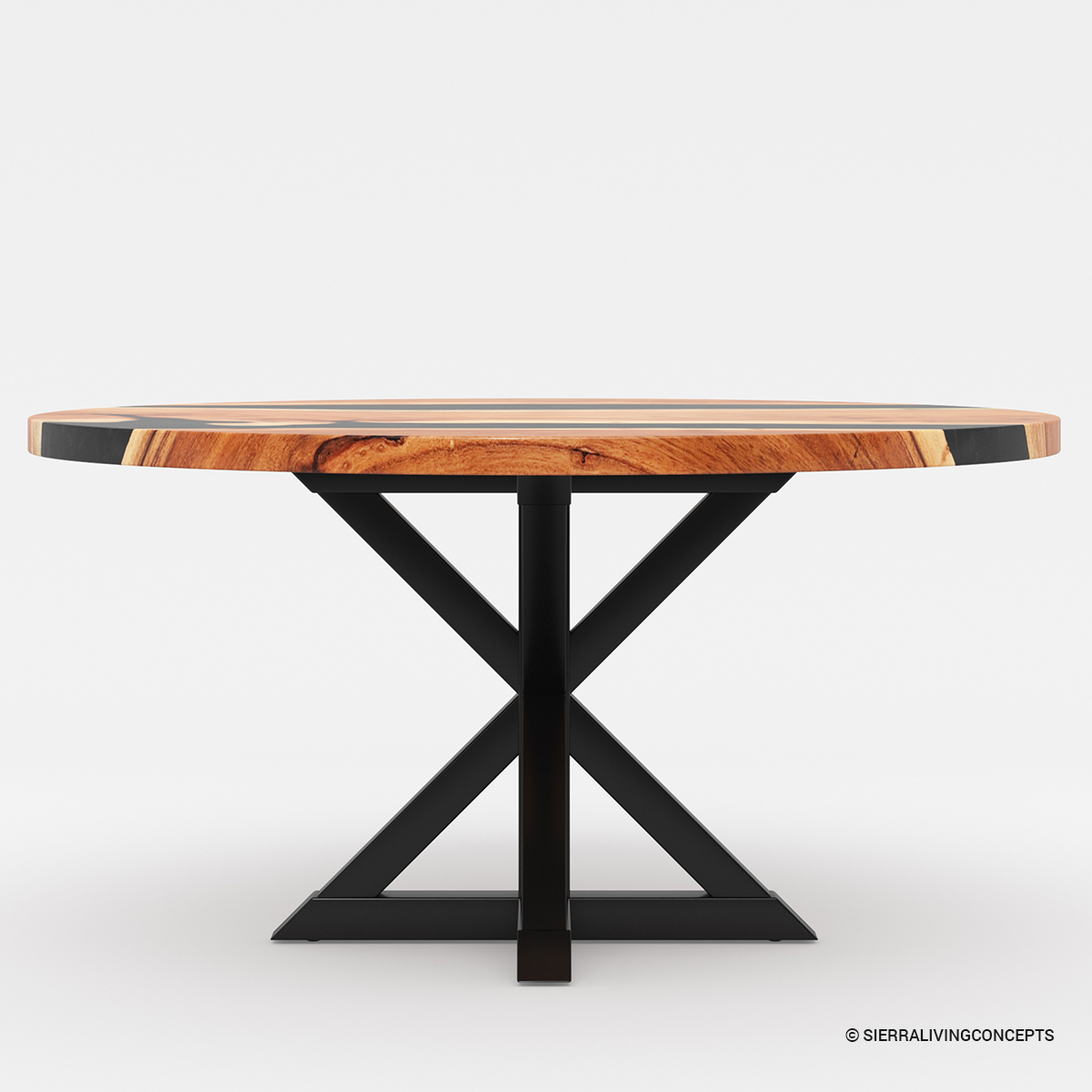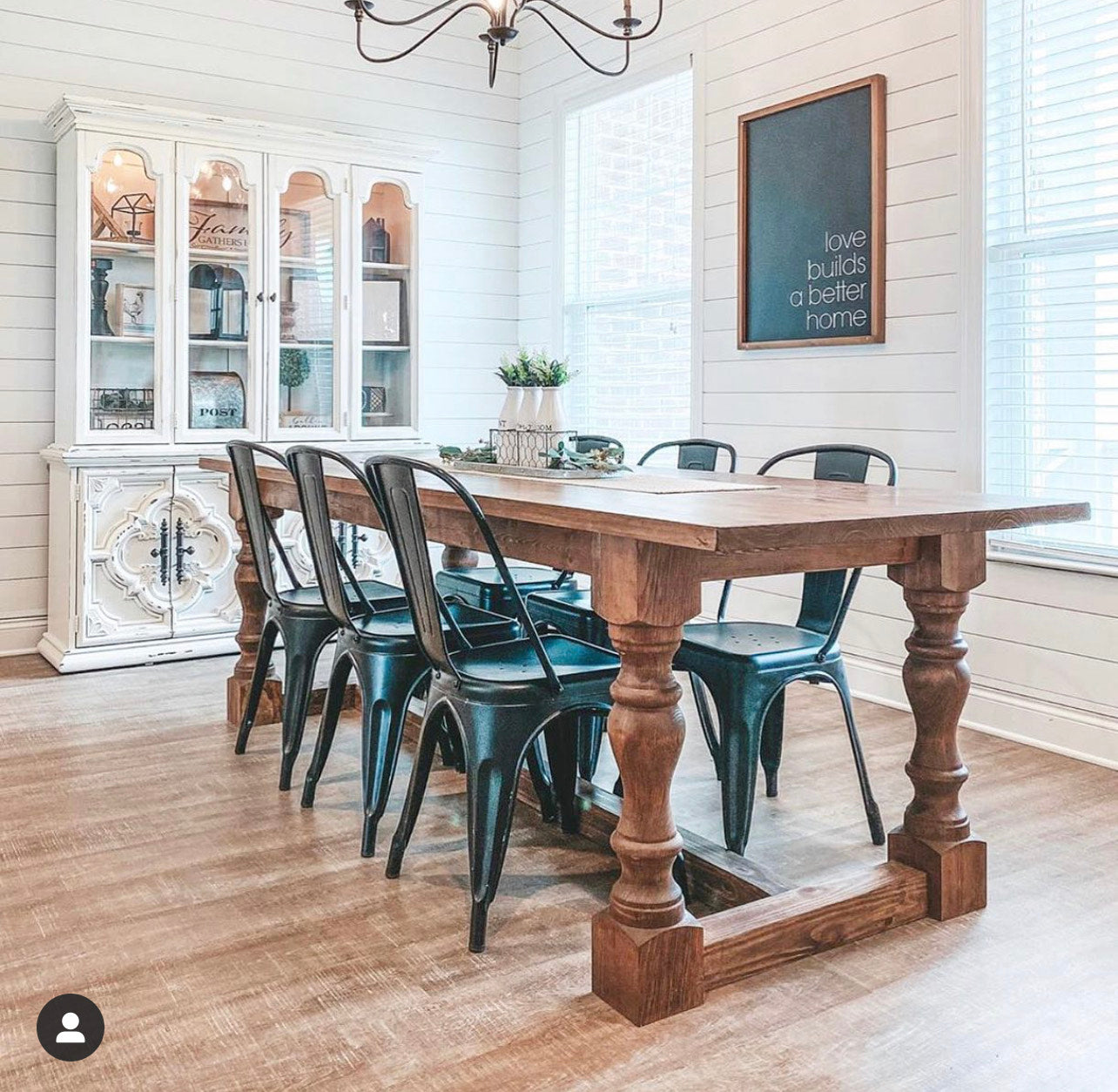The Top Trends in Dining Room Table Legs You Need to Know
The Top Trends in Dining Room Table Legs You Need to Know
Blog Article
Just How to Pick the Perfect Dining Space Table Legs for Your Home Décor
Picking the ideal eating area table legs is a nuanced procedure that needs cautious consideration of various elements, including your room restraints, aesthetic preferences, and useful needs. The interplay in between materials, measurements, and designs can dramatically affect the setting of your eating area, making it vital to approach this choice methodically.
Assess Your Dining Space
Examining your dining room is vital for choosing the right table legs that complement both visual appeals and performance. Begin by determining the dimensions of your eating area, consisting of ceiling height, flooring room, and distance to other furnishings. This information will certainly help figure out the proper size and elevation of your table, which straight influences the selection of table legs.
Following, consider the style and format of your dining area. An open-concept style might benefit from table legs that provide aesthetic agility, such as slender steel or acrylic choices. Conversely, a much more traditional setup could call for strong wood legs that provide a sense of permanence.
Evaluate the existing color combination and materials in your dining area. Harmonizing the table legs with these elements creates a cohesive look that enhances the overall decor.
Ultimately, a comprehensive assessment of your eating room will certainly assist you in making a notified decision, guaranteeing that your table legs not just improve the aesthetic charm but also offer sensible objectives.
Consider Your Design Preferences
When picking eating room table legs, it is vital to assess your individual design preferences, as they dramatically affect the total visual of your dining room. Your selection of table legs can either complement or contrast with existing decor, making it crucial to straighten them with your preferred interior layout style.
If your home leans towards a modern-day visual, take into consideration streamlined metal or minimal wooden legs that provide a tidy, clean look. For a more typical technique, ornate wood legs with elaborate makings can add a touch of style and elegance. Industrial styles take advantage of robust, raw products such as redeemed wood and steel combinations, mirroring a rugged beauty.
Additionally, farmhouse and rustic designs typically prefer durable, beefy legs that evoke a feeling of warmth and comfort. On the other hand, if your décor is diverse, you might select unconventional shapes or a mix of materials to produce visual rate of interest.

Evaluate Material Options
The choice of material for dining space table legs plays a pivotal function in both longevity and aesthetic charm. Usual materials include wood, metal, and composite options, each offering unique attributes that can influence the general appearance and long life of your table.
Timber is a classic choice, known for its warmth and versatility. Hardwoods like oak and walnut offer phenomenal toughness and can be ended up in numerous discolorations to match any kind of style. However, softwoods like yearn are much more susceptible to dents and go to this website scratches, making them less suitable for high-traffic locations.
Metal legs, often crafted from steel or aluminum, exude modernity and commercial charm. They are immune and extremely long lasting to use, making them suitable for family members with youngsters or regular gatherings (dining room table legs). Furthermore, metal can be finished in various shades, boosting the customization opportunities
Composite materials, such as MDF or laminate, offer affordability and diverse designs. While typically much less resilient than solid timber or steel, they can still provide a stylish look and are typically easy to keep.
Ultimately, the product you pick must line up with your lifestyle, visual preferences, and the degree of use your eating table will experience.
Determine Elevation and Size
Picking the ideal elevation and size for your dining-room table is important for both capability and comfort. The typical elevation for dining tables typically varies from 28 to 30 inches, allowing adequate legroom for many people when seated. It is vital to take into consideration the dimensions of your eating space and the types of chairs you intend to use.

Additionally, think about the percentages of your dining-room. A larger table in a spacious location can create a grand ambiance, while a smaller table works well in more intimate settings. Inevitably, the ideal elevation and dimension will certainly integrate with your total style and boost the eating experience for you and your visitors.
Explore Modification Opportunities

Additionally, the layout of the legs can be personalized to fit numerous designs, such as rustic, contemporary, or industrial. For circumstances, tapered legs can evoke a mid-century modern-day feel, while beefy, block-style legs may resonate with conventional or farmhouse style.
Homeowners can additionally discover shade surfaces, from all-natural wood stains to repaint, enabling them to match or comparison with the tabletop and bordering design.
In addition, leg height can be readjusted to fit specific seating plans or individual choices, improving both convenience and performance.
Last but not least, distinct decorations, such as carvings or attractive brackets, can additionally personalize the table legs, making the dining experience not simply a statement yet a meal piece in the home. By taking into consideration these personalization alternatives, homeowners can produce a dining-room table that really mirrors their individuality.
Final Thought
Picking the perfect dining-room table legs requires careful consideration of different variables, including the dimensions of the dining area, design choices, material sturdiness, and wanted height. Personalization alternatives better enhance the ability to accomplish a cohesive visual that enhances the total style. By methodically evaluating these elements, property owners can make sure that the selected table legs not just meet useful needs yet also add positively to the eating experience and atmosphere of the home.
Choosing the optimal eating space table legs is a nuanced process that requires careful consideration of various elements, including your space constraints, visual choices, and sensible demands.Analyzing your eating room is critical for picking the right table legs that enhance both aesthetics and functionality.When determining dimension, determine the area where the table will be placed to guarantee it fits pleasantly, permitting for at least 36 inches of clearance around the table for easy activity. A bigger table in a roomy area can develop a grand setting, while a smaller sized table works well in even more intimate setups.Choosing the perfect eating space table legs needs careful factor to consider of various factors, consisting of the dimensions of the dining room, style choices, product sturdiness, and desired elevation.
Report this page